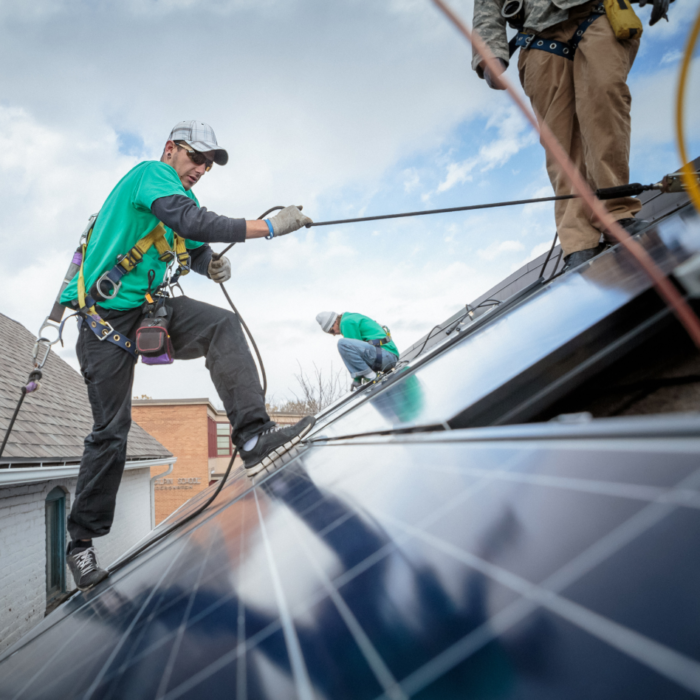EPA moves to cut power plant pollution: What it means for the South
As one of the most significant contributors to climate change, carbon pollution from fossil fuel power plants has gone largely unchecked for decades.
Home to some of the nation’s largest power plants — including three of the top 25 carbon-emitting plants nationwide — the South remains particularly burdened by the fossil fuel industry. As a result communities of color and residents living in lower-wealth areas throughout the South are disproportionately affected by air pollution and the impacts of climate change.
But a recent announcement from the Environmental Protection Agency to limit carbon pollution from power plants signals a turning point in addressing climate change. EPA’s proposal calls for coal and gas plants to cut up to 617 million metric tons of total carbon dioxide through 2042. EPA’s proposal builds on the landmark Inflation Reduction Act, which will help utilities shift from dirty fossil fuels to clean energy.
Setting limits on carbon pollution from gas and coal plants is key to cleaning up the power sector. If we are going to tackle the climate crisis, EPA’s proposal is crucial in moving the South — and the nation — away from a fossil-fuel past and toward a clean-energy future.
Gudrun Thompson, leader of SELC’s Clean Energy & Air Program
EPA’s common-sense proposal will help to protect Southern communities, their health, and their quality of life. EPA’s proposal will be especially critical in states like Tennessee, where the federal utility TVA plans to spend billions building new gas plants and pipelines that will increase climate-warming gases and further burden families already paying high electric bills with even more volatile fossil fuel prices.
A narrow, yet clear path forward for EPA action
In recent years, several attempts to mitigate power plant carbon pollution have failed due to legal challenges from the coal industry and power plant operators.

Although the U.S. Supreme Court’s ruling last June in West Virginia v. EPA limited the agency’s options to curb carbon emissions at existing power plants, EPA’s new proposed limits will help bring the nation closer to federal commitments to cut carbon emissions in half by 2030. The Supreme Court ruling set a narrow pathway for EPA to set new standards for power plant emissions, leaving EPA with fewer options to safeguard communities and the environment from air pollution related to climate change.
However, the court’s ruling left EPA with the power to set carbon emissions limits for power plants based on emissions reduction technologies. Shortly after, Congress passed the landmark climate plan, the Inflation Reduction Act, which explicitly directed the agency to regulate greenhouse gas pollution from power plants.
Bridging the gap with IRA
IRA’s historic investments in clean energy infrastructure and increasing access to renewable energy like solar and wind will be a generational opportunity to address the climate crisis — but more safeguards are needed to help protect communities from one of the country’s most significant sources of heat-trapping pollution. EPA’s proposed limits on pollution from fossil-fueled power plants will help to close that gap.
EPA’s proposal makes it possible for utilities to reduce pollution in a cost-effective way, while also tapping into the immense economic benefits and job creation we have seen firsthand in the South with the growth of the renewable energy industry.
We will continue to press our utilities to embrace the momentum toward a cleaner energy future while reducing pollution — a win-win for local communities and economies.
Alys Campaigne, Leader of SELC’s Climate Initiative.
Stronger safeguards
While the new proposed EPA rules are an important step, EPA can and should develop more robust standards for fossil fuel plants. The current proposal does not apply to smaller gas plants and “peaking” plants that operate infrequently but are far dirtier than larger baseload plants. Our nation has an opportunity to better protect local communities from pollution, but that begins with empowering state and local authorities to ensure that power plant operators implement these standards.
We are in a critical moment to address the climate crisis and need to stay vigilant when it comes to solutions we can implement here and now. Utilities can and should play a critical role in implementing tangible solutions that benefit customers and help our region stay competitive in offering clean energy options.
